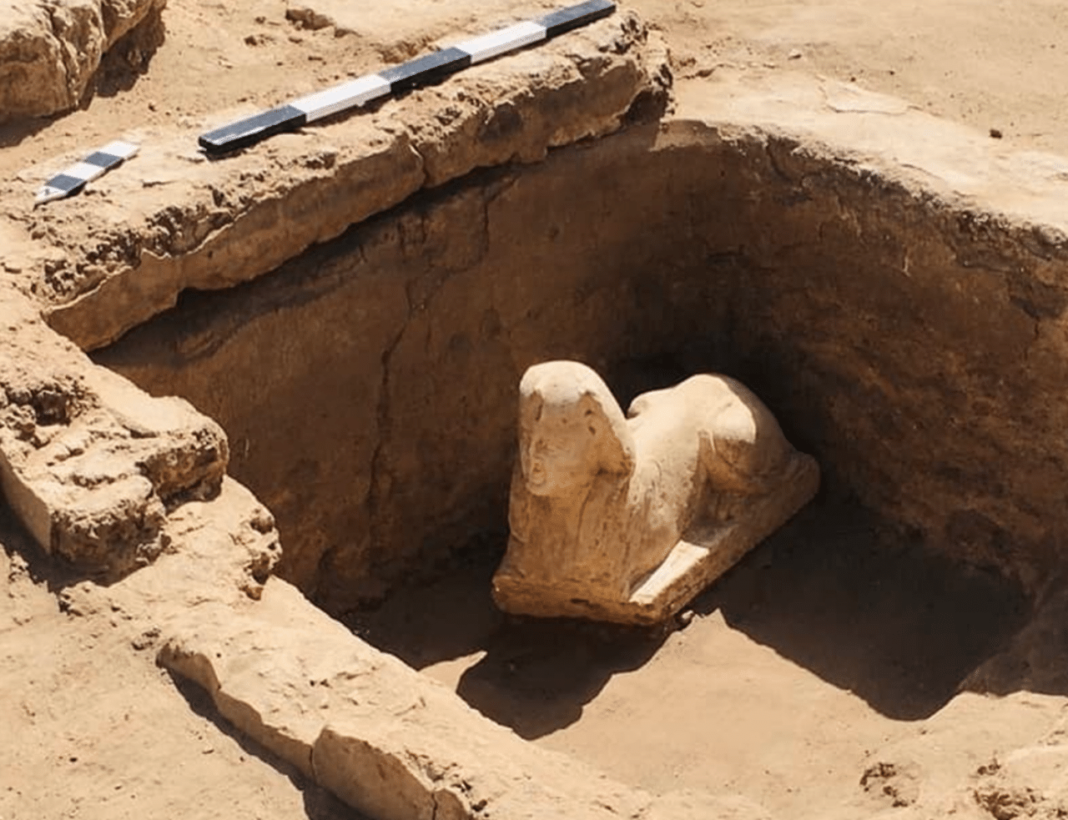An Egyptian archaeological expedition from Ain Shams University discovered a smiling sphinx during excavations near the Temple of Hathor in Dendera (Dandara), Qena District, Egypt’s Ministry of Tourism and Cultural Monuments announced.
In the place where in the past there was a temple of the god Horus, the scientists came across a sanctuary carved in limestone. It consists of a two-level platform with a ramp and a small clay brick basin covered with plaster. The interesting statue was found during the clearing of the pool, specifies BTA.
The face of the statue has regal features, dimples and wears a traditional pharaonic headscarf in the shape of a cobra
“It’s a beautifully and precisely carved sphinx,” said Mahdou el Damati, professor of Egyptology at Ain Shams University and former tourism minister.
The face, which has royal features, is distinguished by its smile with two dimples, the scientist adds. The sphinx wears the nemes headscarf, traditional for pharaohs in Ancient Egypt, with a uraeus in the shape of a cobra.
Initial research suggests that the statue may belong to the Roman emperor Claudius, who ruled North Africa between 41 and 54 AD.
Under the sphinx was found a stone slab with inscriptions in Demotic and hieroglyphs. Relying on them could reveal the identity of the smiling man and shed new light on the area’s ancient past.









